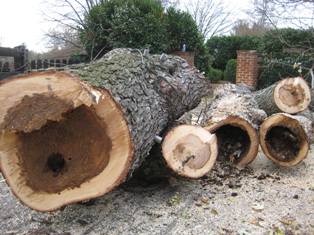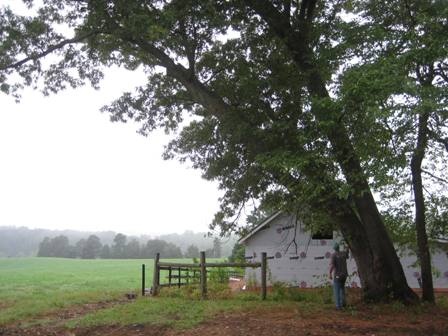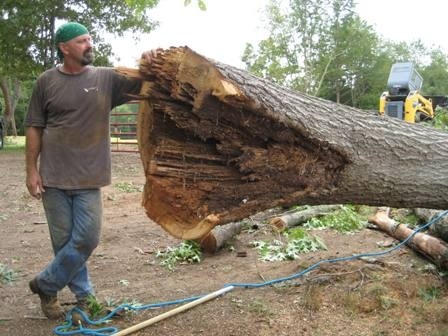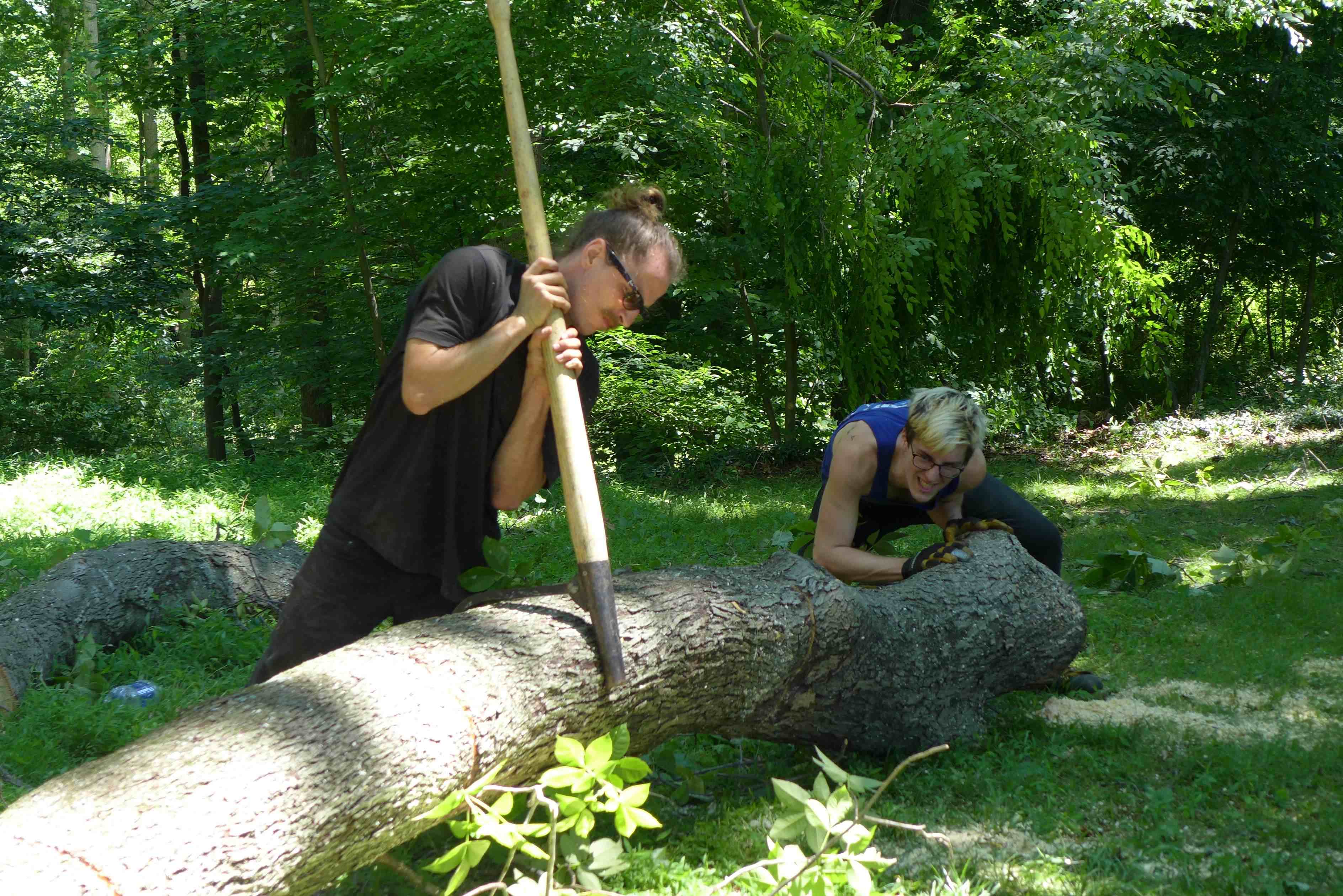K Thomas Lawson is proud to be a division of Bartlett Tree Experts, and our staff now has the backing of an international tree-care company and tree research laboratory to help continue providing excellent tree service and shrub care in the Charlottesville, Virginia area. View a complete list of professional tree services offered by Bartlett.
When is tree removal necessary?
When is tree removal necessary? Trees are like a declining stock--you don’t want to invest money in a questionable stock, and you don’t want invest money in a declining tree. It might be a tough decision to let a tree go, but you must look at the big picture. Think ahead a few years about the tree and your property and consider the reasons we outline below.

Removing a dead or dying tree is advisable as soon as you notice it. The longer you wait, the more decay has set in, and the more dangerous the tree is for a tree professional. This also translates into more danger on your own property and more dollars, the longer you wait to act.
These hollow logs are from an old, weak, and slowly failing Silver Maple. It was hard to predict just when these hollow logs, filled with decades of very moist compost dark brown centers) would collapse under the their own weight. After caring for this tree for decades to minimize the risks, taking it down was the wise decision.
Obvious reasons for tree removal
- The tree is dead
- Declining health--the branches or top of tree is dying back; large dead branches; decay on the main trunk.
- Major storm damage and the tree is beyond repair
- Tree is too close to the house or other buildings, utility lines, play structures pools etc...
- The tree is leaning towards and obvious target--house, driveway, patio, play area or pool.
- Its become a nuisance--dropping seeds, sap, branches, and block views, light and inhibiting lawn. See below for an outside link about lawns.
- Roots pose a serious thereat to foundations, driveways and sidewalks, or underground utilities.
- View clearing
- Major landscape renovations that would either damage trees, or because a tree is not well matched to its location. See below for an outside link on landscape tree choices.
 The left-most leaning Oak is tagged for removal; see next picture for the inside scoop
The left-most leaning Oak is tagged for removal; see next picture for the inside scoop The inside of the tree was rotten, and only two-thrids of the trunk remained; good choice to bring it down before it caused harm.
The inside of the tree was rotten, and only two-thrids of the trunk remained; good choice to bring it down before it caused harm.A mature Red Oak with two main leaders, held together with a
cable, has continued to lean and stretch the cable. Light was seen
between the two leaders at breast height. One of the main leaders, now on the ground, reveals the significant decay at the
base which inevitably would fail. This was an easy choice for tree removal.
Not so obvious reasons to remove a tree
- Structural problems
- Bad crotches with included bark or repeated cracks
- Cracks on the main trunk or main leaders
- The tree is just too big for the location and poses challenges to safety if it falls or drops branches
- New construction--the tree will either be mortally damaged by equipment and disturbance to the ground under it, or is directly in the way of construction. Consider tree removal before the construction rather than after.
- Major diseases or insect infestations that will likely kill the tree soon, or spread disease to other trees. Check out the flat headed borers.
- Interior decay (such as in the photo at the top of the page)
- Leaning in the wrong direction
- Crowding among trees--prioritize which trees are healthiest and worth keeping
 This Hickory was infested with borers that began slowly but killed half the tree last spring. It had to come down immediately because it was over two houses.
This Hickory was infested with borers that began slowly but killed half the tree last spring. It had to come down immediately because it was over two houses.When can we keep the tree instead of removing it?
Good question. This is best left up to an educated and experienced arborist who can use his or her knowledge of how trees tend to grow and decline in your area. Different environmental conditions and pests advance decay or breakage. If you want to avoid tree removal...consider:
Mitigating tree care--such as pruning away damaged areas, or removing substantial weight can slow the decay of a tree and give you more years to enjoy it. As a homeowner, keeping an eye on a tree in decline is essential so that any dramatic changes can be reported to your tree expert. Learn from him or her what to look for as your tree continues to age.
For instance:
- Large sections of the crown (the entire leafy area) leaf out much later than the rest of the tree
- Large sections of the crown appear dead
- Mushrooms are growing at the base
- The bark is falling off in sections
- A large branch, dead or with green growth has fallen that is unrelated to a storm event.
Have your arborist monitor the tree at least every few years!
Can I do this myself?
We do not recommend tree removal by home owners. A
certified arborist and someone with professional felling experience has the skills and the track record of taking down
many different types of trees in a multitude of situations. Not only
can an arborist safely remove a tree, they have the equipment to remove
the branches and the wood which will be a much bigger mess on the ground
than it was up in the air. Trust us, we do this every day. It's a huge amount of work.
What about
tree removal costs?
We offer tree removal in the Charlottesville VA area
Recommended pages from small business owners like us:
Better Lawn Care: Here is some great information about growing sustainable lawns.
Landscape Design Advice: Need a new tree for your property?
